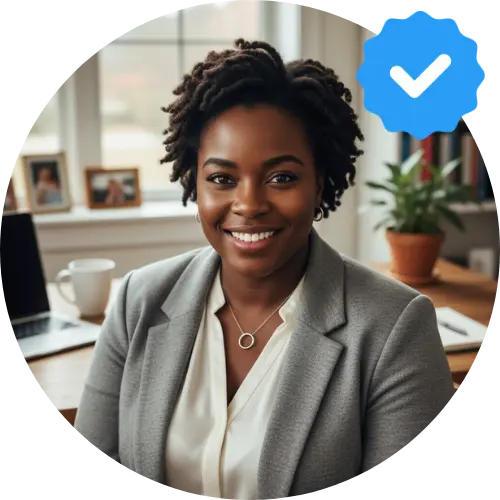Picture this: your great-great-grandmother hiding love letters under her mattress, and here you are, swiping through dating apps while your smart vibrator syncs to Spotify 📱 The evolution of intimacy is honestly wild when you think about it. From handwritten declarations of love to AI-powered pleasure devices, we've come a ridiculously long way in how we connect, communicate, and... well, get it on.
Let's be real - intimacy has always been part of the human experience, but the tools we use? They've transformed faster than you can say "slide into my DMs." And tbh, understanding this journey isn't just fascinating - it actually helps us make better choices about our own intimate lives today.
The Handwritten Heart: When Love Letters Ruled Everything
Before we had read receipts and typing indicators, people poured their souls onto paper. Love letters weren't just romantic gestures - they were the primary way couples maintained intimacy across distance. Think about it: no instant gratification, no emoji reactions, just pure, unfiltered emotion flowing through ink.
These weren't your casual "hey u up?" texts either. We're talking about elaborate, multi-page declarations that people kept for decades. Napoleon wrote over 300 love letters to Josephine. Johnny Cash's letters to June Carter were so steamy they could melt your phone screen. The intimacy was raw, unfiltered, and required serious emotional investment.
But here's what's fascinating - the anticipation was part of the pleasure. Waiting weeks for a response created this incredible buildup that modern instant communication just can't replicate. Your heart would literally race seeing that familiar handwriting in your mailbox.
The Telephone Revolution: Voices Across the Void
Then came the telephone, and suddenly you could hear your lover's voice without traveling miles. This was huge, people. Like, relationship-changing huge.
The first phone sex probably happened about five minutes after Alexander Graham Bell made his first call (okay, maybe not literally, but you get the idea). Suddenly, couples could share intimate moments through sound alone. The sultry phone voice became a thing. Late-night conversations stretched for hours because, for the first time in history, distance didn't mean complete silence.
Party lines added this weird communal element too - your neighbors might accidentally (or not so accidentally) listen in on your private conversations. Privacy was... flexible back then.
Photography Gets Personal: The Polaroid Era
When instant cameras hit the scene, intimate photography exploded. No more waiting for film development or worrying about the photo lab guy seeing your private moments. Polaroids meant immediate gratification and complete privacy.
This was revolutionary for couples exploring visual intimacy. You could take a photo and literally watch it develop in your hands. The anticipation, the secrecy, the control over your own images - it was empowering in ways we might not fully appreciate in our smartphone era.
Of course, this also meant physical photos could be lost, stolen, or discovered. The risks were real, but so was the thrill.
The VHS Tape Underground: Democratizing Adult Content
VHS tapes changed everything about adult content consumption. Suddenly, you didn't need to sneak into sketchy theaters or buy magazines from behind the counter. You could watch whatever you wanted in the privacy of your own home.
This shift was massive for sexual education and exploration. People could see different bodies, different techniques, different ways of being intimate. It wasn't always realistic or healthy representation, but it was accessible in ways previous generations never experienced.
Couples started making their own tapes too. Home videos became a way to explore exhibitionism and preserve intimate moments. The camera became part of the bedroom, not just an observer of it.
The Internet Explosion: Everything Changes Forever
And then came the internet. Holy shit, did everything change fast 🚀
Chat rooms, instant messaging, email - suddenly you could connect with people across the globe instantly. Cybersex became a thing. Online dating emerged. The whole concept of meeting someone and developing intimacy got completely reimagined.
I remember the dial-up days when downloading a single photo took forever, but people were still finding ways to connect intimately online. The anticipation of waiting for an image to load line by line was its own kind of foreplay.
Forums and bulletin boards created communities around every possible kink, interest, and relationship style. People found their tribes in ways that were impossible before. Suddenly, you weren't alone in whatever you were into.
The Smartphone Revolution: Intimacy in Your Pocket
Smartphones put a computer, camera, and communication device in everyone's pocket. The implications for intimacy were staggering.
Sexting became mainstream. Dating apps exploded. Video calls meant long-distance relationships could maintain visual and emotional connection like never before. You could literally carry your intimate relationships with you everywhere.
But this accessibility came with new challenges. Revenge porn, data breaches, addiction to dating apps - the dark side of digital intimacy started showing itself pretty quickly.
Apps like Snapchat tried to address privacy concerns with disappearing messages, but screenshots and screen recordings meant nothing was ever truly private. We're still figuring out how to navigate consent and privacy in the digital age.
The Rise of Sex Tech: When Silicon Valley Meets the Bedroom
Now we're in the era of actual sex technology, and it's getting wild. We're talking about devices that can be controlled remotely, sync to music, learn your preferences, and even connect to virtual reality.
Teledildonics (yes, that's the actual term) allows partners to physically connect across any distance. Your partner in another city can literally control your pleasure device in real-time. It's like science fiction, but it's happening right now in bedrooms everywhere.
AI is starting to play a role too. Chatbots designed for intimate conversation, apps that learn your arousal patterns, devices that adapt to your body's responses - we're moving toward truly personalized pleasure technology.
Virtual reality porn and interactive experiences are creating entirely new categories of intimate content. You're not just watching anymore - you're participating in ways that blur the line between fantasy and reality.
The App-ification of Everything Intimate
There's literally an app for every aspect of intimate life now. Period tracking, fertility monitoring, relationship coaching, kink communities, poly dating, sexual wellness education - if you can think of it, someone's built an app for it.
This democratization of information and tools is incredibly empowering. You can learn about your body, track your cycles, find compatible partners, and explore your sexuality with resources that previous generations never had access to.
But it also means your most private data is stored on servers owned by companies. Your intimate patterns, preferences, and behaviors are being tracked and analyzed. The trade-off between convenience and privacy is real, and we're all navigating it differently.
Pandemic Pivots: When Physical Distance Forced Digital Innovation
COVID-19 accelerated digital intimacy trends by about a decade. Suddenly, everyone was forced to figure out how to maintain intimate connections without physical presence.
Video dating became normal. Sex toy sales skyrocketed. Couples in the same house started sexting each other from different rooms. OnlyFans exploded as people monetized their intimate content directly.
The pandemic proved that humans will always find ways to connect intimately, even when the world tries to keep us apart. It also showed us how quickly we can adapt our intimate behaviors when we need to.
What This Rapid Evolution Means for Modern Intimacy
Here's the thing - each technological leap didn't replace what came before; it added new layers to how we experience intimacy. People still write love letters (though now they're often emails or texts). We still talk on the phone. We still take intimate photos.
But we also have options our ancestors couldn't imagine. Long-distance relationships can maintain physical intimacy through technology. People can explore aspects of their sexuality safely and privately. Communities form around shared interests and experiences.
The speed of change is only accelerating. What feels cutting-edge today will seem quaint in ten years. But the core human need for connection, intimacy, and pleasure remains constant.
Frequently Asked Questions About Intimacy Technology
How has technology changed the way we form intimate relationships?
Technology has expanded our options for meeting people, maintaining long-distance relationships, and exploring our sexuality. Dating apps connect us with potential partners we'd never meet otherwise, while video calls and messaging keep relationships alive across any distance. We can now maintain intimate connections in ways that were impossible just decades ago.
Are digital intimate relationships as meaningful as physical ones?
Digital intimacy can be incredibly meaningful and emotionally fulfilling. Many people form deep, lasting connections through online platforms. However, it's different from physical intimacy, not necessarily better or worse. The key is finding what works for your individual needs and relationship style.
What should I consider before trying sex tech devices?
Privacy and security should be your top priorities. Research the company's data practices, use strong passwords, and understand what information is being collected. Start with reputable brands that prioritize user privacy. Also, communicate openly with your partner about boundaries and comfort levels.
How do I maintain privacy in digital intimate relationships?
Use secure, encrypted messaging apps, avoid sharing identifying information in intimate content, and be cautious about what you post on social media. Remember that screenshots and recordings can be made of anything digital. Trust your instincts - if something feels risky, it probably is.
Will technology continue to change how we experience intimacy?
Absolutely. We're likely to see more AI integration, improved virtual reality experiences, and even more sophisticated connected devices. The key is staying informed about new technologies while maintaining focus on genuine human connection and consent.
The Future of Intimate Technology
We're just getting started, tbh. Haptic feedback suits, brain-computer interfaces, and AI companions that can learn and adapt to your emotional needs are all in development. The line between human and artificial intimacy is going to get increasingly blurry.
But here's what I think will remain constant: the human need for genuine connection, understanding, and pleasure. Technology can enhance these experiences, but it can't replace the fundamental human elements of trust, vulnerability, and emotional intimacy.
The most successful intimate technologies will be the ones that bring people closer together, not replace human connection entirely. Tools that help us communicate better, understand our bodies more deeply, and explore our desires safely will thrive.
Wrapping Up: What We've Learned
From handwritten love letters to AI-powered pleasure devices, the journey of intimate technology shows us how adaptable humans are when it comes to connection and pleasure. Each generation finds new ways to express desire, maintain relationships, and explore sexuality.
The speed of change can feel overwhelming, but remember - you get to choose which technologies enhance your intimate life and which ones don't serve you. Not every new app or device needs to be part of your experience. The goal isn't to use every available tool; it's to find what genuinely improves your connections and pleasure.
What's most beautiful about this history is how it proves that human intimacy is incredibly resilient and creative. No matter what technological changes come next, people will continue finding ways to love, connect, and experience pleasure together. And honestly? That's pretty amazing 💕
Your intimate life is yours to design. Whether you prefer handwritten notes or high-tech toys, the most important thing is that your choices feel authentic to you and your relationships. Technology should serve your intimacy, not the other way around.




